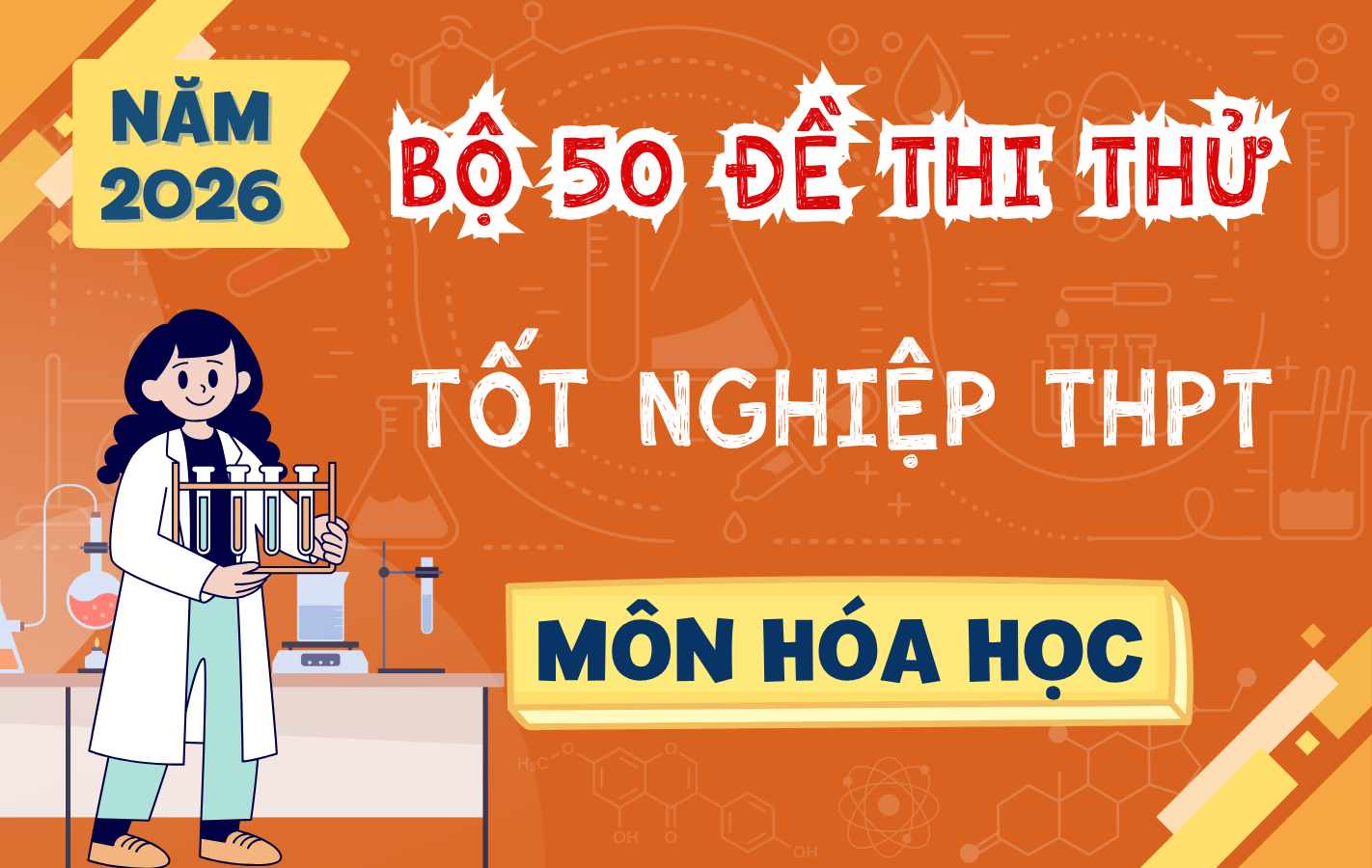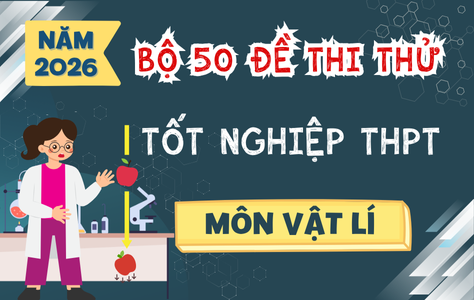Câu hỏi:
Read the following passage about technology in education and mark the letter A, B, C, or D to indicate the option that best fits each of the numbered blanks from 18 to 22.
THE ROLE OF TECHNOLOGY IN MODERN EDUCATION
Technology has transformed modern education in significant ways. Today, classrooms are no longer restricted to physical spaces, as students and teachers (18) ______. Online platforms and virtual classrooms allow for a more flexible and accessible learning environment, providing education to students across the globe.
In recent years, educational institutions have increasingly relied on digital tools, (19) ______. These tools not only facilitate teaching but also help in managing academic records and tracking student progress. With the rise of online learning, the traditional role of the teacher has also evolved, focusing more on guidance and mentorship rather than merely delivering information.
One notable benefit of technology in education is its ability to offer personalized learning experiences; (20) ______. Each student can now receive material tailored to their own pace and learning style, thus enhancing their understanding and retention. Despite the advantages, there are challenges, as not all students have equal access to these technological resources. Ensuring fair access to technology is crucial for bridging the educational divide and (21) ______.
Overall, technology continues to shape the educational landscape, making learning more interactive, engaging, and inclusive. The future of education is likely to see even more innovations as (22) ______.
Ensuring fair access to technology is crucial for bridging the educational divide and (21) ______.
Read the following passage about technology in education and mark the letter A, B, C, or D to indicate the option that best fits each of the numbered blanks from 18 to 22.
THE ROLE OF TECHNOLOGY IN MODERN EDUCATION
Technology has transformed modern education in significant ways. Today, classrooms are no longer restricted to physical spaces, as students and teachers (18) ______. Online platforms and virtual classrooms allow for a more flexible and accessible learning environment, providing education to students across the globe.
In recent years, educational institutions have increasingly relied on digital tools, (19) ______. These tools not only facilitate teaching but also help in managing academic records and tracking student progress. With the rise of online learning, the traditional role of the teacher has also evolved, focusing more on guidance and mentorship rather than merely delivering information.
One notable benefit of technology in education is its ability to offer personalized learning experiences; (20) ______. Each student can now receive material tailored to their own pace and learning style, thus enhancing their understanding and retention. Despite the advantages, there are challenges, as not all students have equal access to these technological resources. Ensuring fair access to technology is crucial for bridging the educational divide and (21) ______.
Overall, technology continues to shape the educational landscape, making learning more interactive, engaging, and inclusive. The future of education is likely to see even more innovations as (22) ______.
Ensuring fair access to technology is crucial for bridging the educational divide and (21) ______.
Đáp án đúng:
Câu hỏi này thuộc đề thi trắc nghiệm dưới đây, bấm vào Bắt đầu thi để làm toàn bài
Câu hỏi liên quan
Read the following passage about urban farming and mark the letter A, B, C, or D to indicate the best answer to each of the following questions from 23 to 30.
Urban farming, or the practice of growing food within city limits, has gained popularity worldwide. As cities expand and populations grow, there is increasing pressure on food supplies, making urban farming an appealing solution. From rooftop gardens to community plots, urban farms can help produce fresh, local food in areas that are typically food deserts. Additionally, they provide green spaces in densely populated areas, contributing to environmental sustainability.
Urban farming also has social benefits. It encourages community engagement and provides educational opportunities for residents. People can learn about sustainable agriculture, food production, and environmental conservation. Furthermore, urban farms can offer job opportunities, particularly in underprivileged neighborhoods, where employment options are often limited. By creating jobs and encouraging healthy eating, urban farms positively impact the health and well-being of local communities.
However, urban farming is not without its challenges. One significant issue is space; cities are crowded, and land is scarce. Finding suitable plots for farming can be difficult and expensive. There are also regulatory hurdles, as some cities have strict zoning laws that limit agricultural activities. Additionally, urban soil can be contaminated with pollutants, making it unsuitable for food production. Despite these obstacles, innovative solutions, such as hydroponics and vertical farming, are making urban farming more feasible.
In the future, urban farming could play a vital role in food security. As climate change and urbanization continue, local food sources will become increasingly important. By reducing dependency on long supply chains, urban farming can ensure that cities remain resilient in the face of global challenges.
Which of the following is NOT a benefit of urban farming mentioned in the passage?
Read the following passage about urban farming and mark the letter A, B, C, or D to indicate the best answer to each of the following questions from 23 to 30.
Urban farming, or the practice of growing food within city limits, has gained popularity worldwide. As cities expand and populations grow, there is increasing pressure on food supplies, making urban farming an appealing solution. From rooftop gardens to community plots, urban farms can help produce fresh, local food in areas that are typically food deserts. Additionally, they provide green spaces in densely populated areas, contributing to environmental sustainability.
Urban farming also has social benefits. It encourages community engagement and provides educational opportunities for residents. People can learn about sustainable agriculture, food production, and environmental conservation. Furthermore, urban farms can offer job opportunities, particularly in underprivileged neighborhoods, where employment options are often limited. By creating jobs and encouraging healthy eating, urban farms positively impact the health and well-being of local communities.
However, urban farming is not without its challenges. One significant issue is space; cities are crowded, and land is scarce. Finding suitable plots for farming can be difficult and expensive. There are also regulatory hurdles, as some cities have strict zoning laws that limit agricultural activities. Additionally, urban soil can be contaminated with pollutants, making it unsuitable for food production. Despite these obstacles, innovative solutions, such as hydroponics and vertical farming, are making urban farming more feasible.
In the future, urban farming could play a vital role in food security. As climate change and urbanization continue, local food sources will become increasingly important. By reducing dependency on long supply chains, urban farming can ensure that cities remain resilient in the face of global challenges.
The word ‘They’ in paragraph 1 refers to ______.
Read the following passage about urban farming and mark the letter A, B, C, or D to indicate the best answer to each of the following questions from 23 to 30.
Urban farming, or the practice of growing food within city limits, has gained popularity worldwide. As cities expand and populations grow, there is increasing pressure on food supplies, making urban farming an appealing solution. From rooftop gardens to community plots, urban farms can help produce fresh, local food in areas that are typically food deserts. Additionally, they provide green spaces in densely populated areas, contributing to environmental sustainability.
Urban farming also has social benefits. It encourages community engagement and provides educational opportunities for residents. People can learn about sustainable agriculture, food production, and environmental conservation. Furthermore, urban farms can offer job opportunities, particularly in underprivileged neighborhoods, where employment options are often limited. By creating jobs and encouraging healthy eating, urban farms positively impact the health and well-being of local communities.
However, urban farming is not without its challenges. One significant issue is space; cities are crowded, and land is scarce. Finding suitable plots for farming can be difficult and expensive. There are also regulatory hurdles, as some cities have strict zoning laws that limit agricultural activities. Additionally, urban soil can be contaminated with pollutants, making it unsuitable for food production. Despite these obstacles, innovative solutions, such as hydroponics and vertical farming, are making urban farming more feasible.
In the future, urban farming could play a vital role in food security. As climate change and urbanization continue, local food sources will become increasingly important. By reducing dependency on long supply chains, urban farming can ensure that cities remain resilient in the face of global challenges.
Which of the following best paraphrases the underlined sentence in paragraph 2?
Read the following passage about urban farming and mark the letter A, B, C, or D to indicate the best answer to each of the following questions from 23 to 30.
Urban farming, or the practice of growing food within city limits, has gained popularity worldwide. As cities expand and populations grow, there is increasing pressure on food supplies, making urban farming an appealing solution. From rooftop gardens to community plots, urban farms can help produce fresh, local food in areas that are typically food deserts. Additionally, they provide green spaces in densely populated areas, contributing to environmental sustainability.
Urban farming also has social benefits. It encourages community engagement and provides educational opportunities for residents. People can learn about sustainable agriculture, food production, and environmental conservation. Furthermore, urban farms can offer job opportunities, particularly in underprivileged neighborhoods, where employment options are often limited. By creating jobs and encouraging healthy eating, urban farms positively impact the health and well-being of local communities.
However, urban farming is not without its challenges. One significant issue is space; cities are crowded, and land is scarce. Finding suitable plots for farming can be difficult and expensive. There are also regulatory hurdles, as some cities have strict zoning laws that limit agricultural activities. Additionally, urban soil can be contaminated with pollutants, making it unsuitable for food production. Despite these obstacles, innovative solutions, such as hydroponics and vertical farming, are making urban farming more feasible.
In the future, urban farming could play a vital role in food security. As climate change and urbanization continue, local food sources will become increasingly important. By reducing dependency on long supply chains, urban farming can ensure that cities remain resilient in the face of global challenges.
According to the passage, which of the following is TRUE?
Read the following passage about urban farming and mark the letter A, B, C, or D to indicate the best answer to each of the following questions from 23 to 30.
Urban farming, or the practice of growing food within city limits, has gained popularity worldwide. As cities expand and populations grow, there is increasing pressure on food supplies, making urban farming an appealing solution. From rooftop gardens to community plots, urban farms can help produce fresh, local food in areas that are typically food deserts. Additionally, they provide green spaces in densely populated areas, contributing to environmental sustainability.
Urban farming also has social benefits. It encourages community engagement and provides educational opportunities for residents. People can learn about sustainable agriculture, food production, and environmental conservation. Furthermore, urban farms can offer job opportunities, particularly in underprivileged neighborhoods, where employment options are often limited. By creating jobs and encouraging healthy eating, urban farms positively impact the health and well-being of local communities.
However, urban farming is not without its challenges. One significant issue is space; cities are crowded, and land is scarce. Finding suitable plots for farming can be difficult and expensive. There are also regulatory hurdles, as some cities have strict zoning laws that limit agricultural activities. Additionally, urban soil can be contaminated with pollutants, making it unsuitable for food production. Despite these obstacles, innovative solutions, such as hydroponics and vertical farming, are making urban farming more feasible.
In the future, urban farming could play a vital role in food security. As climate change and urbanization continue, local food sources will become increasingly important. By reducing dependency on long supply chains, urban farming can ensure that cities remain resilient in the face of global challenges.
In which paragraph does the writer discuss social advantages of urban farming?
Read the following passage about urban farming and mark the letter A, B, C, or D to indicate the best answer to each of the following questions from 23 to 30.
Urban farming, or the practice of growing food within city limits, has gained popularity worldwide. As cities expand and populations grow, there is increasing pressure on food supplies, making urban farming an appealing solution. From rooftop gardens to community plots, urban farms can help produce fresh, local food in areas that are typically food deserts. Additionally, they provide green spaces in densely populated areas, contributing to environmental sustainability.
Urban farming also has social benefits. It encourages community engagement and provides educational opportunities for residents. People can learn about sustainable agriculture, food production, and environmental conservation. Furthermore, urban farms can offer job opportunities, particularly in underprivileged neighborhoods, where employment options are often limited. By creating jobs and encouraging healthy eating, urban farms positively impact the health and well-being of local communities.
However, urban farming is not without its challenges. One significant issue is space; cities are crowded, and land is scarce. Finding suitable plots for farming can be difficult and expensive. There are also regulatory hurdles, as some cities have strict zoning laws that limit agricultural activities. Additionally, urban soil can be contaminated with pollutants, making it unsuitable for food production. Despite these obstacles, innovative solutions, such as hydroponics and vertical farming, are making urban farming more feasible.
In the future, urban farming could play a vital role in food security. As climate change and urbanization continue, local food sources will become increasingly important. By reducing dependency on long supply chains, urban farming can ensure that cities remain resilient in the face of global challenges.
In which paragraph does the writer discuss the future role of urban farming?

Bộ 50 Đề Thi Thử Tốt Nghiệp THPT Giáo Dục Kinh Tế Và Pháp Luật Năm 2026 – Theo Cấu Trúc Đề Minh Họa Bộ GD&ĐT

Bộ 50 Đề Thi Thử Tốt Nghiệp THPT Lịch Sử Học Năm 2026 – Theo Cấu Trúc Đề Minh Họa Bộ GD&ĐT

Bộ 50 Đề Thi Thử Tốt Nghiệp THPT Công Nghệ Năm 2026 – Theo Cấu Trúc Đề Minh Họa Bộ GD&ĐT

Bộ 50 Đề Thi Thử Tốt Nghiệp THPT Môn Hóa Học Năm 2026 – Theo Cấu Trúc Đề Minh Họa Bộ GD&ĐT

Bộ 50 Đề Thi Thử Tốt Nghiệp THPT Môn Sinh Học Năm 2026 – Theo Cấu Trúc Đề Minh Họa Bộ GD&ĐT

Bộ 50 Đề Thi Thử Tốt Nghiệp THPT Môn Vật Lí Năm 2026 – Theo Cấu Trúc Đề Minh Họa Bộ GD&ĐT
ĐĂNG KÝ GÓI THI VIP
- Truy cập hơn 100K đề thi thử và chính thức các năm
- 2M câu hỏi theo các mức độ: Nhận biết – Thông hiểu – Vận dụng
- Học nhanh với 10K Flashcard Tiếng Anh theo bộ sách và chủ đề
- Đầy đủ: Mầm non – Phổ thông (K12) – Đại học – Người đi làm
- Tải toàn bộ tài liệu trên TaiLieu.VN
- Loại bỏ quảng cáo để tăng khả năng tập trung ôn luyện
- Tặng 15 ngày khi đăng ký gói 3 tháng, 30 ngày với gói 6 tháng và 60 ngày với gói 12 tháng.











